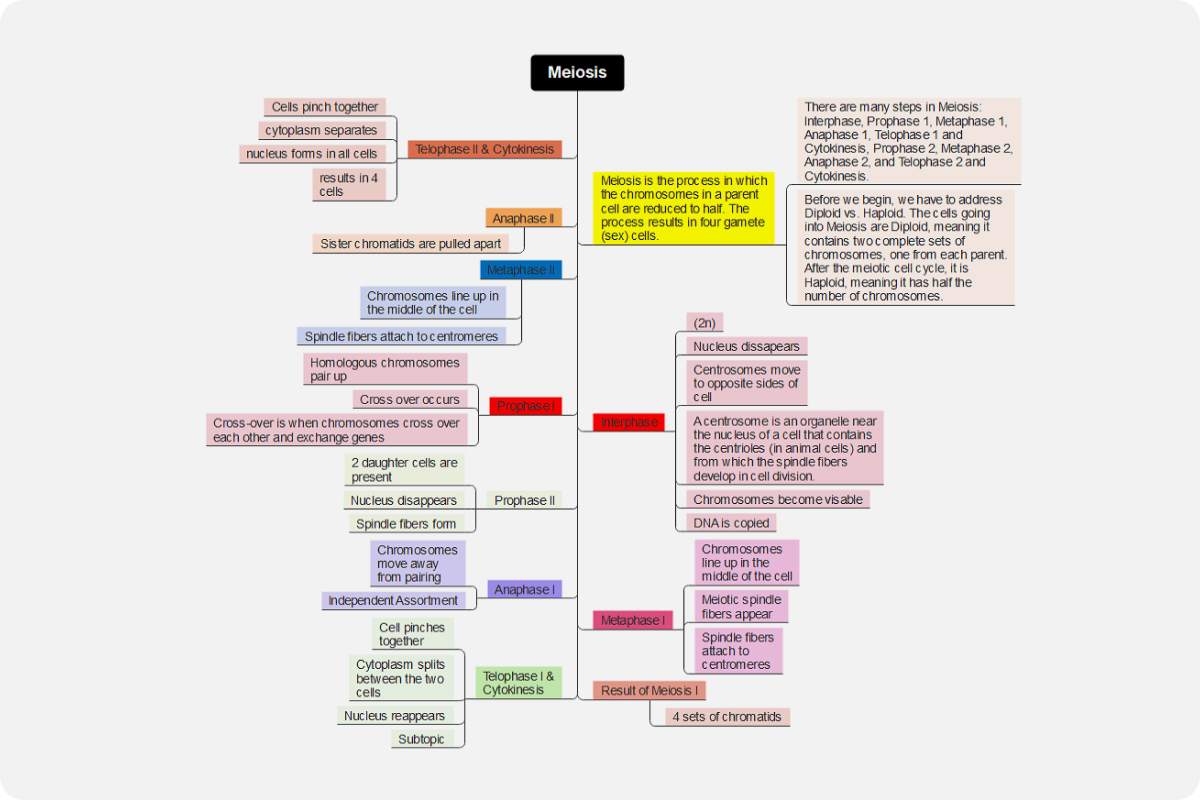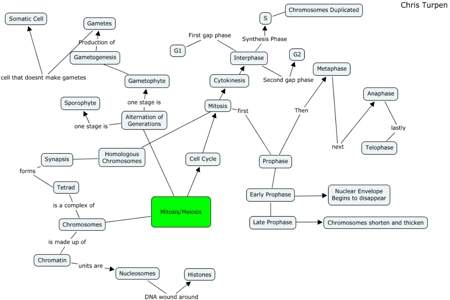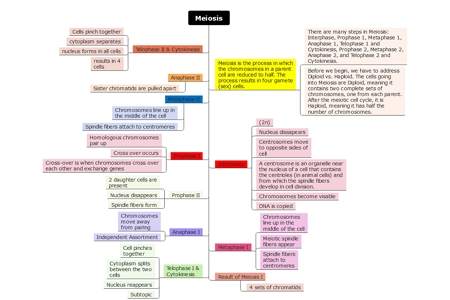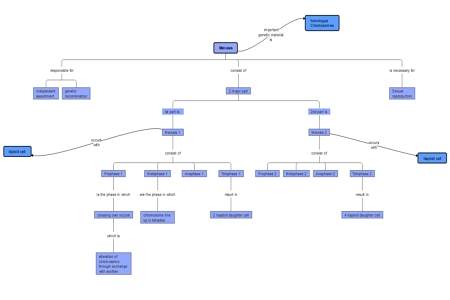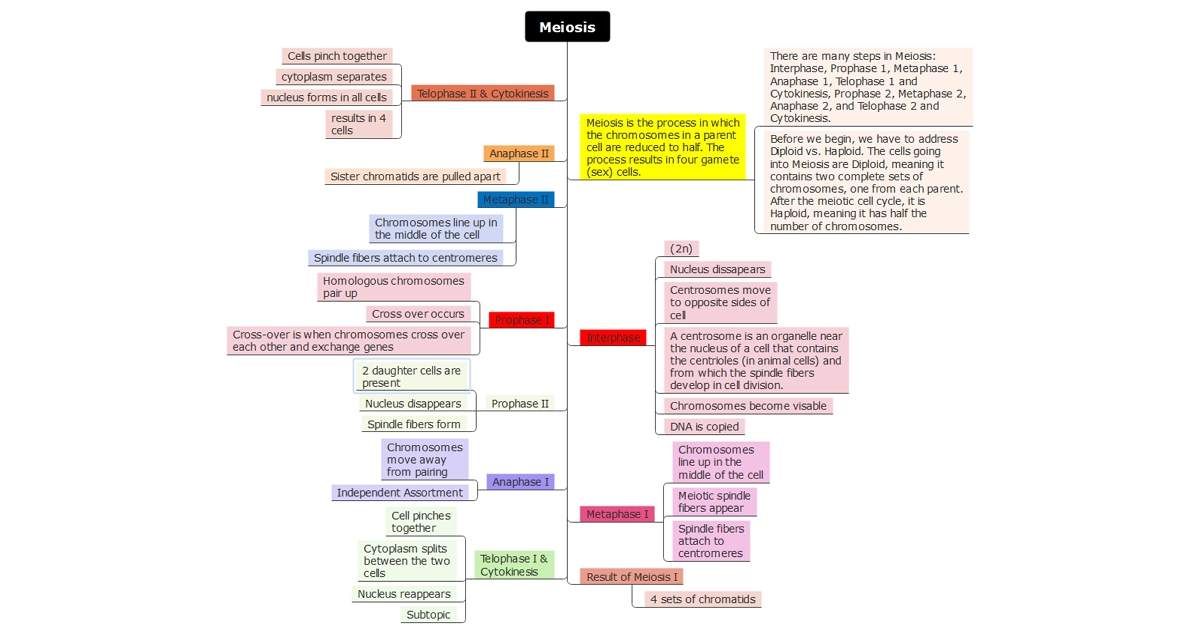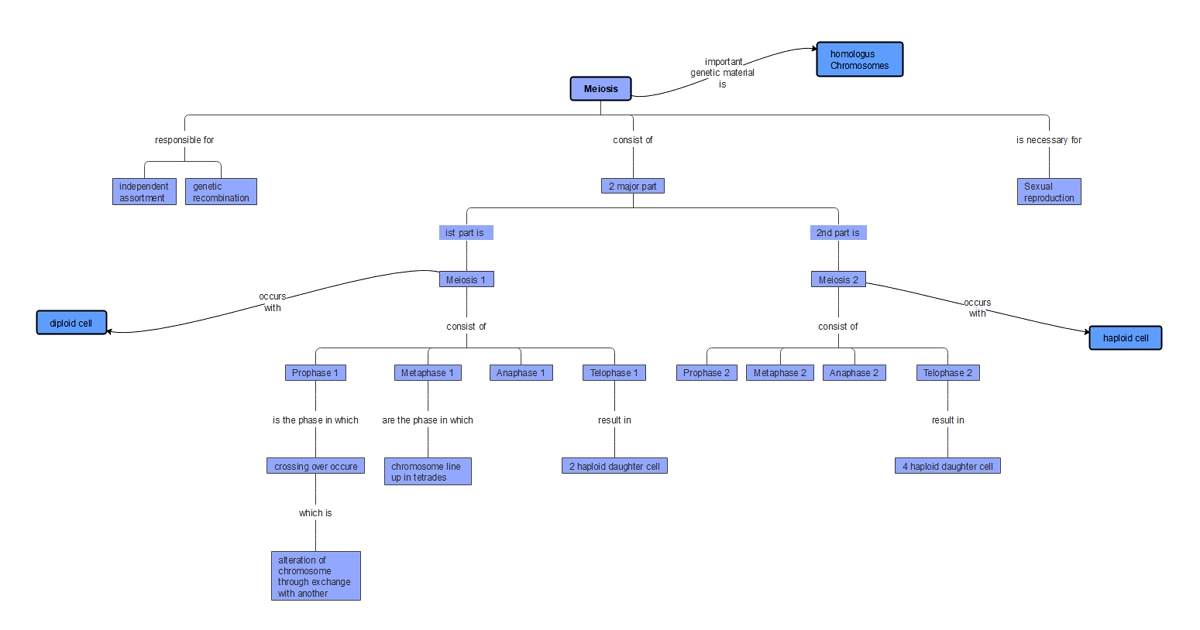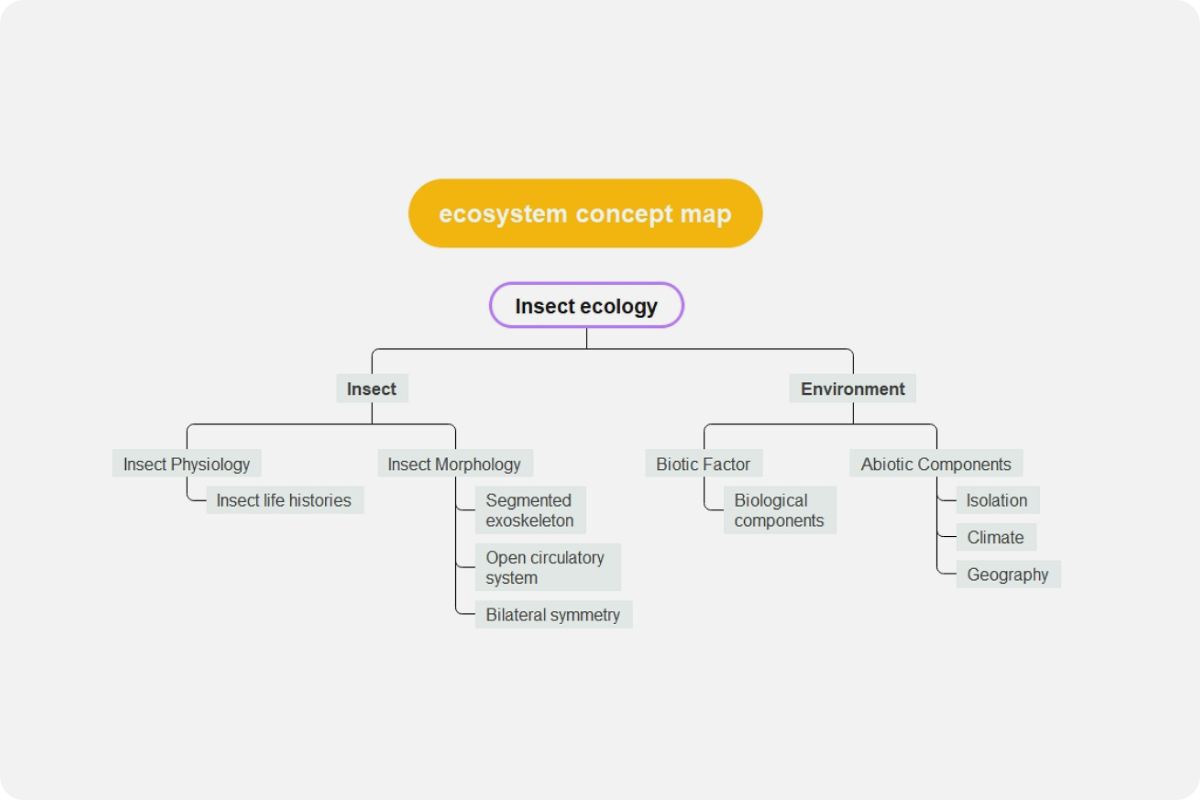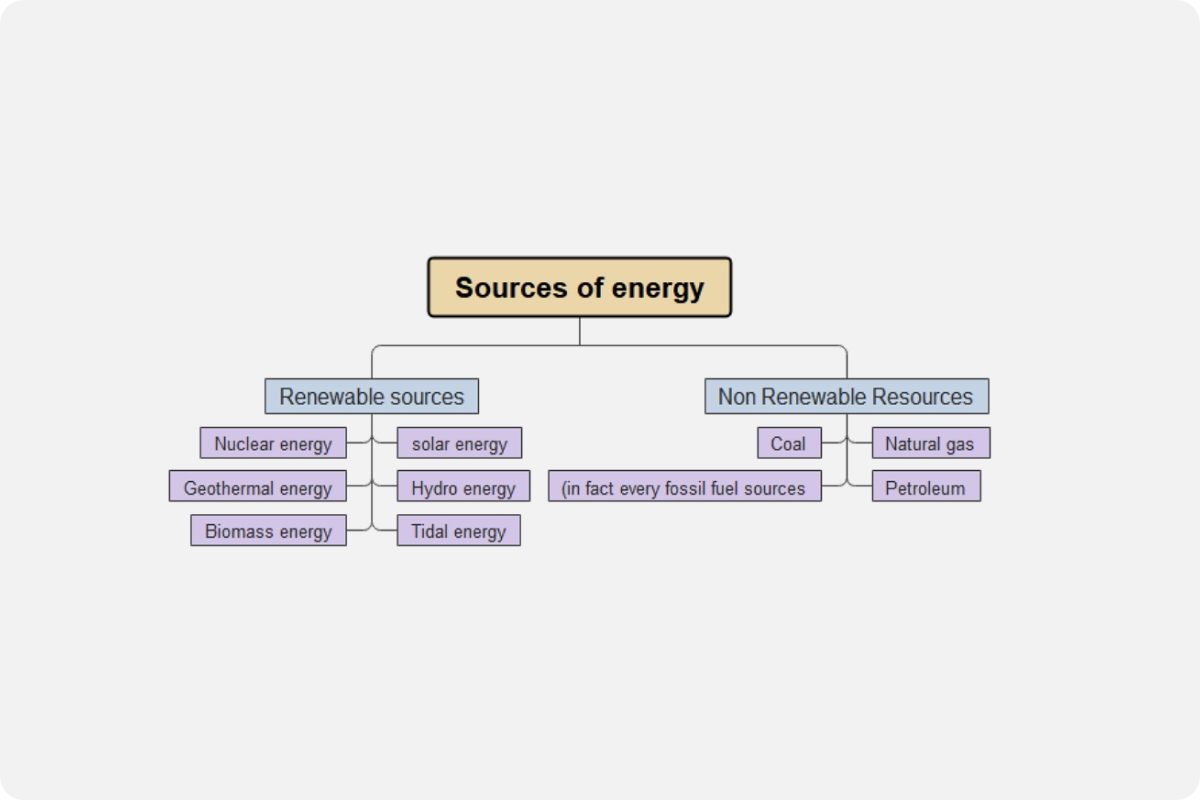What is a meiosis concept map?
When it involves science, you can always expect vast variations of topics. Meiosis is just one of the many interesting subjects about science. As interesting as it may seem, one can learn how meiosis works by reading long paragraph explanations or diagrams. Concept maps today are helpful, especially for learners who feel comfortable studying a subject through visual representations.
Theoretically, meiosis is a kind of cell division that reduces the parent cell's chromosome number in half, resulting in the production of four gametes cells. The said process is essential in the production of sperm and egg cells for sexual reproduction.
Meiosis comprises two divisions - the first and second meiotic divisions. Each division also has distinct processes. By using a meiosis concept map, you can classify each function and process, making it easy for readers to understand every division.
Benefits of using a meiosis concept map
Concept maps use arrows and other elements to link details, theories, or questions. There are some illustrations where links are labeled to illustrate the relationship between every element. In most cases, a meiosis concept map is used to provide insights into how learners and viewers perceive a scientific topic.
In a school setting, concept maps are instruments to assess how well learners understand a particular subject or concept and monitor their development on specific topics over time. Besides keeping track of learners' understanding and academic developments, a concept map also clarifies misconceptions, especially on complex structures and subjects.
Since meiosis is also a complex topic, through concept mapping, you can zoom in to vital functions within the concept of meiosis and expand it further. Also, you can present a macro perspective of meiosis, giving your audience a general view of how it functions and its essence in the human body.
Meiosis Concept Map Templates
Before you create your meiosis concept map, you can refer to the following examples:
Example 1
The example below seems to be a bit complex at first glance. This meiosis concept map illustrates a bird's eye view of the subject. The creator highlighted the central concept with green, while the other elements were highlighted with gray.
For beginners, it can be confusing how to grasp the connection of every node. Hence you can use colors instead to classify elements so that they can be understandable enough.
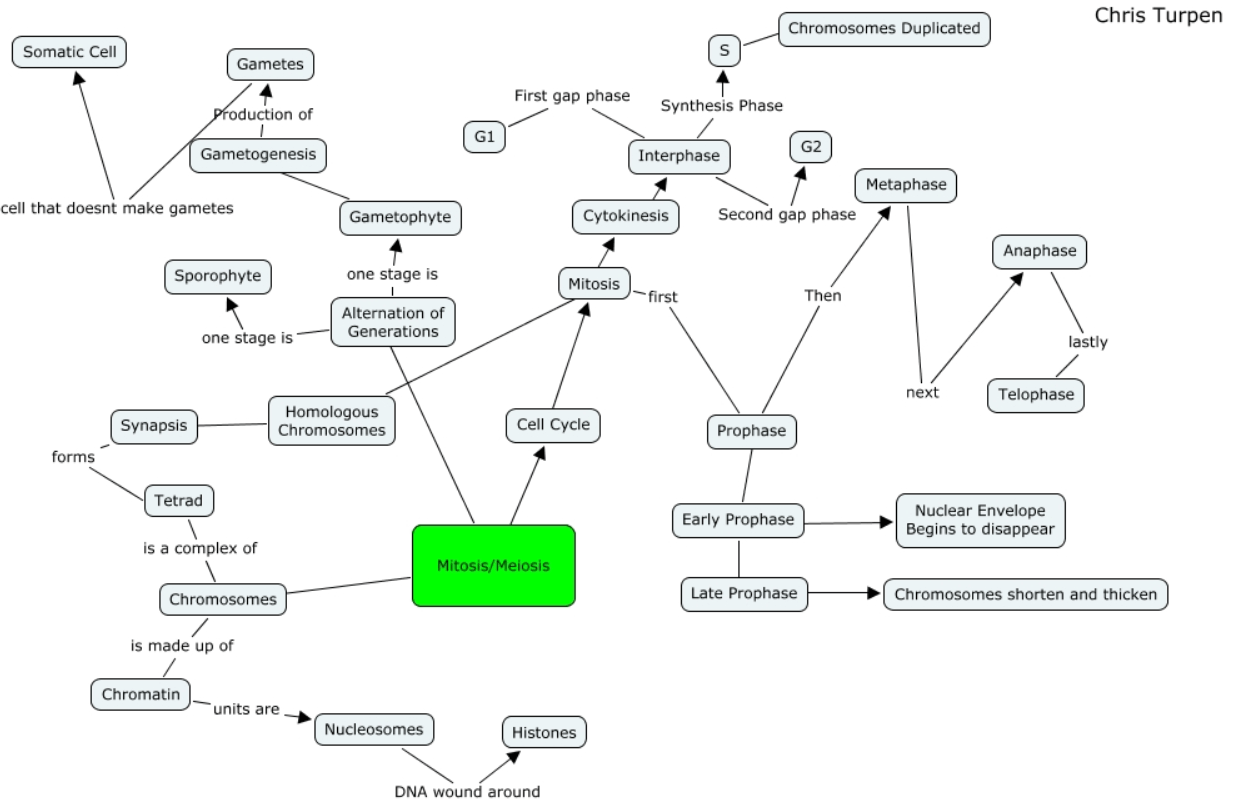
Source: cursa.ihmc.us
Example 2
The concept map below is an excellent illustration of meiosis. You can see from the diagram that meiosis is a part of the cell cycle, with mitosis being the other one. The creator also used images to represent every element of the cycle.
Instead of using several arrowheads circling the central concept, it uses a vertical pattern to classify the two types of the cell cycle. There are also explanations of every stage in the cycle, which is very helpful in understanding the concept. The creator did not include a variety of colors, but it still looks comprehensive with the pattern, images, and few explanations.
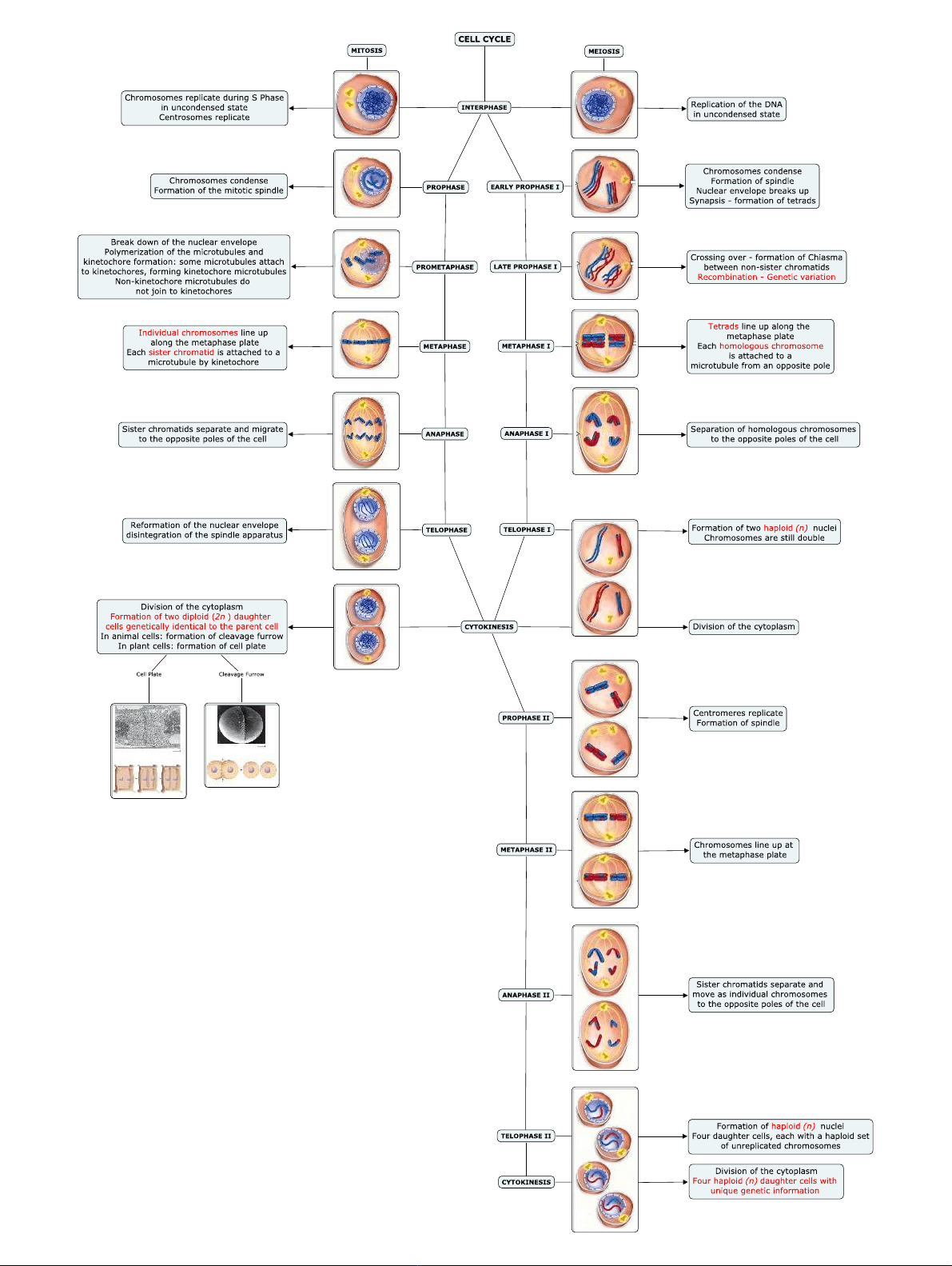
Source: www.studocu.com
Example 3
Why EdrawMind?
EdrawMind is a full-featured collaborative mind mapping and brainstorming tool. It is convenient and helpful for you to use EdrawMind to sort out your thoughts, visualize ideas, take notes, plan projects and more importantly, find solutions to problems.
Users are allowed to insert different kinds of objects into topics and mind maps in EdrawMind, including relationship line, boundary, callout, summary, mark, clip art, picture, hyperlink, attachment, note, comment, and tag. EdrawMind offers you a simple way to create mind maps on Windows, macOS, and Linux. Download the desktop version and try the free online version now!
22 structures & 47 themes & 750+
cliparts
Support Win, Mac, Linux, Android, iOS
Advanced import & export options
On-premises software for business
Enterprise-level data security
12 structures & 33 themes & 700+
cliparts
Access diagrams anywhere, anytime
Templates Gallery
Team management & Project management
Real-time Collaboration
